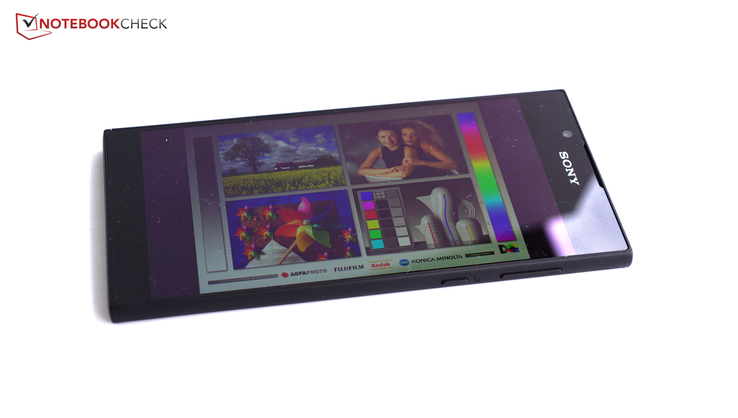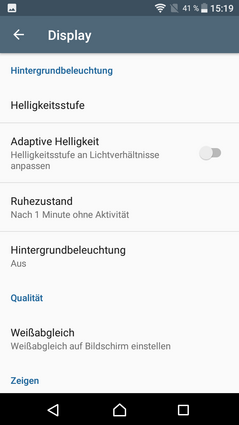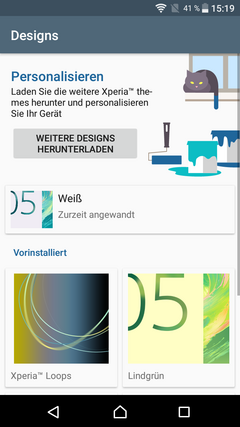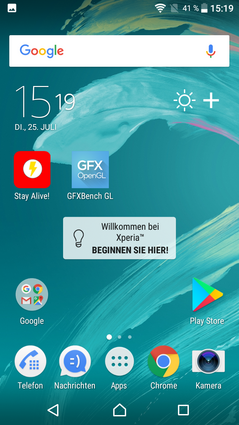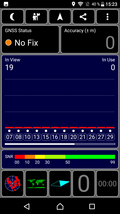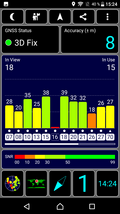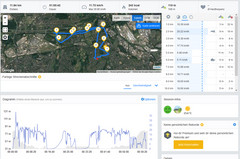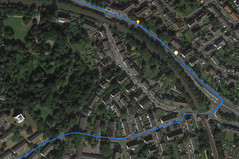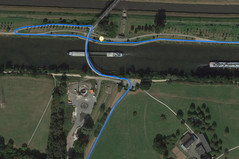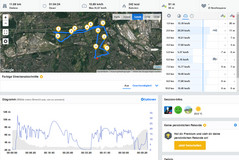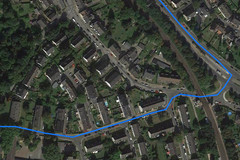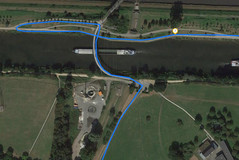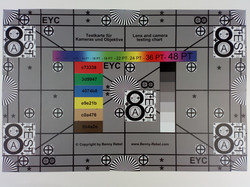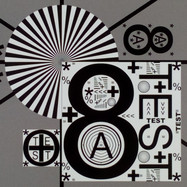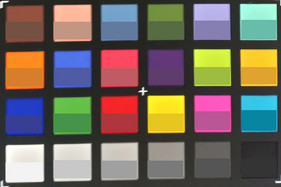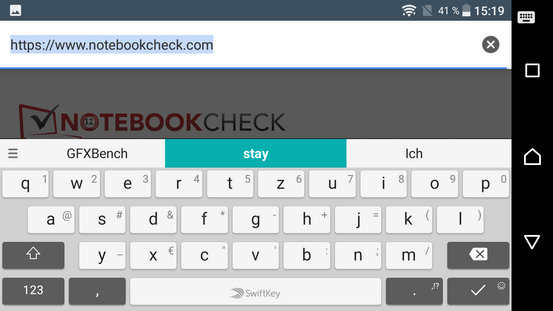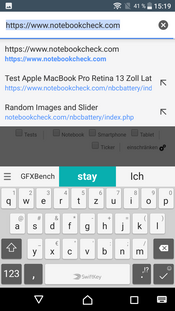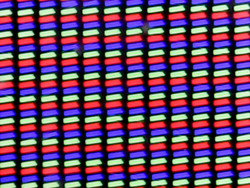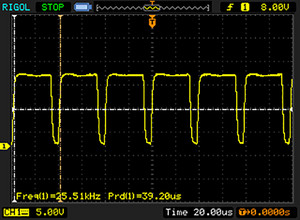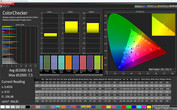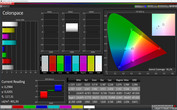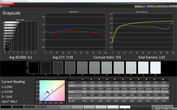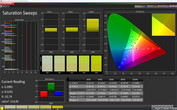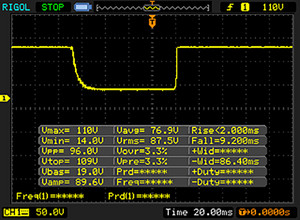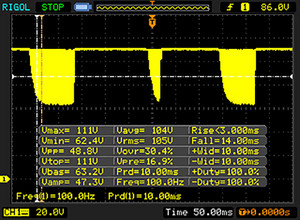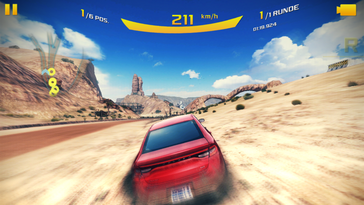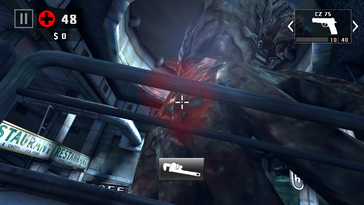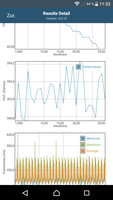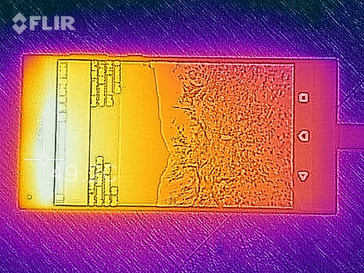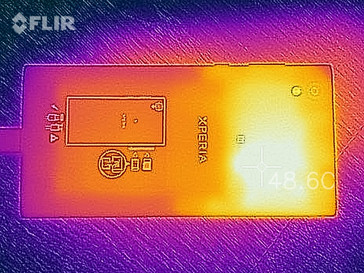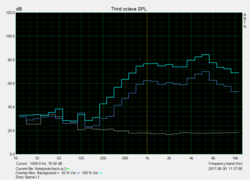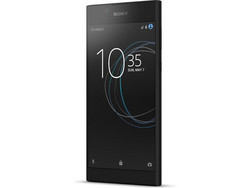Sony Xperia L1 Smartphone Review
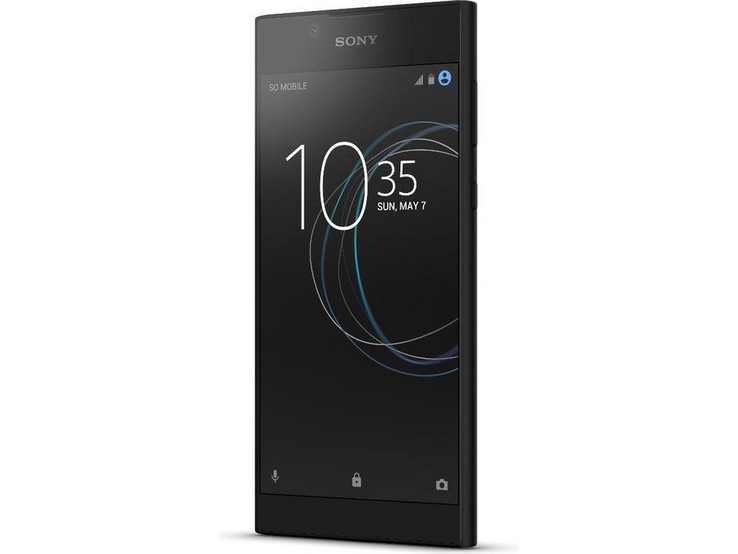
For the original German review, click here.
The Sony Xperia L1 has a 5.5-inch display, which is still within the range of phones that can be easily operated with one hand. Our test unit's predecessor (at least by name) is the Sony Xperia L, presented in 2013, which is equivalent to the medieval period of smartphones. Apart from their names, the two devices do not have much in common.
With a price of $200, the Xperia L1 is positioned at the bottom of the middle range. Phones in this price range usually do not offer convenient features such as fingerprint sensors or a large range of supported LTE networks. Neither does our test unit. What is the difference between the Xperia L1 and its similarly priced competition? Could it be a camera with particularly high resolution? Or extensive software that learns from your inputs? To find out, we have compared the Sony Xperia L1 with other devices such as the HTC Desire 10 Lifestyle, the Honor 6X, the LG K10 or the Huawei P8 Lite 2017.
Case
Apart from the front, the Sony Xperia L1's case has a rough finish; available colors are black, white and pink. It is designed to fit into Sony's current line, which is great: narrow bezels, a narrow bar below the screen and a slightly wider one above - in total, the display-to-case ratio is very good. The rounded corners make handling very comfortable. The Xperia L1 weighs 180 grams (~6.3 oz), which is rather heavy, and its 8.7 mm (~0.34 in) case is rather thick. Stability is as you would expect from a device of this price: pressure on the front and back is quite visible on the screen and warping makes the case creak and the screen change color.
The battery cannot be removed; there is a slot for the SIM and microSD cards on the left side. The case is not water or dust proof.
Connectivity
2 GB of RAM and 16 GB of storage is an average configuration for this range. However, you can get better storage solutions for the same price with the Honor 6X, for example. You can effectively use just over 10 GB out of the 16 GB of storage - the other 6 GB are already occupied by the system. It is also possible to insert a microSD card and expand storage by up to 256 GB, but Sony will only let you configure the microSD card as external storage and apps cannot be saved to the memory card.
The USB connection only supports USB 2.0 speeds, but at least the connector can be plugged in either way, as it is a USB Type-C port. The device also has NFC, USB OTG and an FM radio, which is normal for a device of this price range nowadays.
Software
Sony has given the device Android 7.0, a rather new version of the operating system. The security patches are dated May 5th 2017, so are not really up-to-date anymore. Sony smartphones, including the Xperia L1, have their own launcher. This can be customized with different designs, although many of them have to be bought. Apart from that, the device operates just like any other Android phone, so if you are coming from Android you should have no difficulties. The phone also offers a detailed walk-through to help you get accustomed to the new phone. The interface has been made prettier by Sony by adding some animations and symbols to the settings.
The device comes with quite a lot of additional software, for example, Sony's own app store "What's New", which just forwards you to the Google PlayStore, really. The Spotify, Amazon and Facebook apps are obviously advertising apps and AVG Protection Pro offers you an ad-free virus scanner with Pro features for 180 days, after which you have either to accept less features or pay for Pro. Sony's video, picture and music apps double with Google's standard apps. Others, such as PlayStation or the manufacturer's drawing app are missing, but can be installed manually.
As of late, Sony's customized Android also offers tips to improve your experience with the device, based on your behavior. If you let it, the software will even intervene on its own and, for example, deactivate apps that are not used anymore in order to free up working memory and system performance.
Communication & GPS
The Sony Xperia L1 supports seven LTE frequencies, which is better than most comparison devices, but really only makes sense for Europe. The phone will not have reception in exotic places. Reception in general is good: in the well-developed German D2 network, LTE signal strength was at about 50% in a town apartment. It is a little annoying that you have to restart the smartphone after inserting or taking out a SIM card. The device does not support Hot Swap while it is turned on. It also took quite some time for the device to connect to the network after we first inserted the SIM card.
The device supports the Wi-Fi standards 802.11 a/b/g/n. This includes 5-GHz networks, which most comparison devices do not have. The Xperia L1 also has rather high transfer rates, but of course it cannot keep up with high-end smartphones that support 802.11 ac. The HTC Desire 10 Lifestyle is a little faster at transferring data. Wi-Fi reception is great near the router and websites load quickly. At a distance of 10 meters (~32.8 ft) and through three walls, pages still load at a similar speed, but reception drops by about a quarter.
| Networking | |
| iperf3 transmit AX12 | |
| HTC Desire 10 Lifestyle (AVM FritzBox 6490 Cable) | |
| Sony Xperia L1 (Linksys EA8500, 5.0 GHz) | |
| Honor 6X (Linksys EA8500, 2.4 GHz) | |
| LG K10 2017 (Linksys EA8500, 2.4 GHz) | |
| Huawei P8 lite 2017 (AVM Fritz!Box 6490 Cable) | |
| iperf3 receive AX12 | |
| HTC Desire 10 Lifestyle (AVM FritzBox 6490 Cable) | |
| Sony Xperia L1 (Linksys EA8500, 5.0 GHz) | |
| Honor 6X (Linksys EA8500, 2.4 GHz) | |
| Huawei P8 lite 2017 (AVM Fritz!Box 6490 Cable) | |
| LG K10 2017 (Linksys EA8500, 2.4 GHz) | |
The smartphone was not able to locate us indoors. It took a moment outdoors, but then located us within 8 meters (~26.2 ft), which is not a very good result.
We took the Sony Xperia L1 on a bike ride in order to evaluate its GPS performance properly, and brought the Garmin Edge 500 along, too - a professional navigation system for bicyclists. The measured routes differ by about 250 meters (~273 yds), which is a good result. If you look at the recorded route, you can see that the Xperia L1 performed quite well and managed to record bends and curves quite accurately. It is definitely suitable for leisure-time use.
Telephone & Voice Quality
Even if Sony has given the telephone app a new symbol: it is still the standard Android app that you will find on many other Android smartphones. This was a good decision as the app is well structured and easy to use.
Voice quality while telephoning is average: We could understand our contact clearly via the earpiece, but the sound is distorted and there is a light droning when you turn the volume up. The microphone had similar issues: It managed to transmit when we spoke quietly, but our contact could also hear some rustling and cracking sounds. We could hear our call partner fairly well on speakerphone, but the microphone only registers loud voices and our call partner heard a lot of background noises.
Cameras
The Xperia L1's cameras are more or less what you would expect from its price range: a main camera with 13 MP resolution and a front camera with 5 MP. Still, some of our comparison devices have been equipped with higher resolution front cameras. Compared to more high-end sensors, the main camera seems to take slightly blurry pictures. The dynamics in light and dark areas are clearly lower than in the Samsung Galaxy S8 Plus. The images also seem a little washed out and colors are rather pale. Zooming in confirms the washed-out details and low dynamics. These are the usual problems that camera sensors on smartphones in this price range have. The only exception here is the Honor 6X.
Videos can be recorded in 1080p and 30 frames per second. Again, the colors seem a little pale, but image sharpness is OK. Brightness quickly adapts to the lighting situation; it is not possible to manually focus or change the exposure settings while filming.
The front camera takes good selfies, but light areas can become a little too overpowering and sharpness could be better.
We also tested the main camera in lab conditions with set lighting, which makes the pictures comparable. The photograph of our test chart shows that surfaces are grainy and patchy. Colors appear quite natural, but writing on red and yellow background is blurry. You can notice the lacking contrast in the image of black writing on brown background, which is hard to read. Image sharpness is average, but remains consistent over the whole image. During our color comparison we noticed that most colors are a little too light and light tones of gray have a brown hue.
Accessories & Warranty
The device comes with a power supply and USB cable only. There are no accessories specifically for the Xperia L1 on the Sony website.
The manufacturer offers a 24-month warranty. Please see our Guarantees, Return policies and Warranties FAQ for country-specific information.
Input Devices & Handling
Sony has chosen SwiftKey as the keyboard app for the Xperia L1. This app is used a lot and offers many settings. Personally, we prefer Google's GBoard keyboard, as we feel that it is a little clearer. Other keyboard apps can be installed from the Google PlayStore.
The touchscreen is easy to use and has a smooth surface that makes gliding easy; the screen is receptive even in the corners. The Android keys are on the screen, which is the only navigation option, as the device has no hardware or touch buttons. The standby button and volume rocker are located on the right side of the case. They are easily identified by touch and have a clear pressure point. Unlike most Sony smartphones, our test unit does not have a dedicated camera button, but the volume rocker can be used as shutter release instead.
Display
The Xperia L1 fulfills our expectations with a resolution of 1280x720 pixels, although the Honor 6X and Huawei P8 Lite have shown that higher resolutions are also possible in this price range. The average screen brightness is at 478 cd/m², which is an average result. It has consistent brightness distribution at 94%, which means even larger areas of color are displayed uniformly.
We measured high-frequency flickering at low brightness levels. This is called Pulse Width Modulation and is a way to lower screen brightness. In this case, the frequency is so high that it should not cause any problems even for sensitive users.
| |||||||||||||||||||||||||
Brightness Distribution: 94 %
Center on Battery: 479 cd/m²
Contrast: 826:1 (Black: 0.58 cd/m²)
ΔE ColorChecker Calman: 4.5 | ∀{0.5-29.43 Ø4.77}
ΔE Greyscale Calman: 4.1 | ∀{0.09-98 Ø5}
Gamma: 2.03
CCT: 7139 K
| Sony Xperia L1 IPS, 1280x720, 5.5" | LG K10 2017 IPS, 1280x720, 5.3" | Honor 6X IPS, 1920x1080, 5.5" | Huawei P8 lite 2017 IPS, 1920x1080, 5.2" | HTC Desire 10 Lifestyle IPS, 1280x720, 5.5" | |
|---|---|---|---|---|---|
| Screen | -19% | -5% | 2% | -10% | |
| Brightness middle (cd/m²) | 479 | 384 -20% | 547 14% | 575 20% | 380 -21% |
| Brightness (cd/m²) | 478 | 350 -27% | 540 13% | 559 17% | 369 -23% |
| Brightness Distribution (%) | 94 | 85 -10% | 94 0% | 91 -3% | 92 -2% |
| Black Level * (cd/m²) | 0.58 | 0.36 38% | 0.57 2% | 0.39 33% | 0.26 55% |
| Contrast (:1) | 826 | 1067 29% | 960 16% | 1474 78% | 1462 77% |
| Colorchecker dE 2000 * | 4.5 | 6 -33% | 5.1 -13% | 5.2 -16% | 6.6 -47% |
| Colorchecker dE 2000 max. * | 7.5 | 14 -87% | 9.1 -21% | 10.3 -37% | 10.4 -39% |
| Greyscale dE 2000 * | 4.1 | 5.9 -44% | 6.2 -51% | 7.2 -76% | 7.4 -80% |
| Gamma | 2.03 108% | 2 110% | 2.09 105% | 2.4 92% | 2.29 96% |
| CCT | 7139 91% | 8042 81% | 6546 99% | 7224 90% | 8665 75% |
* ... smaller is better
Screen Flickering / PWM (Pulse-Width Modulation)
| Screen flickering / PWM detected | 25510 Hz | ||
The display backlight flickers at 25510 Hz (worst case, e.g., utilizing PWM) . The frequency of 25510 Hz is quite high, so most users sensitive to PWM should not notice any flickering. In comparison: 53 % of all tested devices do not use PWM to dim the display. If PWM was detected, an average of 8081 (minimum: 5 - maximum: 343500) Hz was measured. | |||
The high black value of 0.58 cd/m2 means that black areas look dark gray and contrast is mediocre. Colors are not particularly vivid either.
The CalMAN software and spectrophotometer measured a slight blue cast in light shades of gray; the sRGB color space is covered by 95.2% - although we should consider this result more as a point of reference due to the imprecise method of measurement. White balance can be adjusted manually and made to suit personal preferences.
Display Response Times
| ↔ Response Time Black to White | ||
|---|---|---|
| 11 ms ... rise ↗ and fall ↘ combined | ↗ 2 ms rise | |
| ↘ 9 ms fall | ||
| The screen shows good response rates in our tests, but may be too slow for competitive gamers. In comparison, all tested devices range from 0.1 (minimum) to 240 (maximum) ms. » 28 % of all devices are better. This means that the measured response time is better than the average of all tested devices (20.2 ms). | ||
| ↔ Response Time 50% Grey to 80% Grey | ||
| 17 ms ... rise ↗ and fall ↘ combined | ↗ 3 ms rise | |
| ↘ 14 ms fall | ||
| The screen shows good response rates in our tests, but may be too slow for competitive gamers. In comparison, all tested devices range from 0.165 (minimum) to 636 (maximum) ms. » 30 % of all devices are better. This means that the measured response time is better than the average of all tested devices (31.6 ms). | ||
At maximum screen brightness, the screen can be read in the sunshine outdoors, but you will often have to move into shade due to the reflective screen. The viewing angles are good, but there is quite a color shift when you look at the phone from the side.
Performance
Sony has chosen the quad-core Mediatek MT6737T with a maximum clock rate of 1.5 GHz. This means the Xperia L1 is not quite as fast as the LG K10, while the Honor 6X and Huawei P8 Lite are even further ahead. Nonetheless, our test unit offered good performance for its price range and even beat the HTC Desire 10 Lifestyle. During everyday use, you can expect the operating system to lag a little occasionally, but usually performance is smooth. Apps and especially games need quite a bit longer to load than on smartphones that are more expensive.
The graphics unit is an ARM Mali-T720 MP2. Just as with the SoC, it is positioned in the lower mid-range of our comparison devices.
| AnTuTu v6 - Total Score (sort by value) | |
| Sony Xperia L1 | |
| LG K10 2017 | |
| Honor 6X | |
| Huawei P8 lite 2017 | |
| HTC Desire 10 Lifestyle | |
| PCMark for Android | |
| Work performance score (sort by value) | |
| Sony Xperia L1 | |
| Honor 6X | |
| Huawei P8 lite 2017 | |
| HTC Desire 10 Lifestyle | |
| Work 2.0 performance score (sort by value) | |
| Sony Xperia L1 | |
| LG K10 2017 | |
| Geekbench 4.4 | |
| 64 Bit Single-Core Score (sort by value) | |
| Sony Xperia L1 | |
| LG K10 2017 | |
| 64 Bit Multi-Core Score (sort by value) | |
| Sony Xperia L1 | |
| LG K10 2017 | |
| Compute RenderScript Score (sort by value) | |
| Sony Xperia L1 | |
| LG K10 2017 | |
| GFXBench (DX / GLBenchmark) 2.7 | |
| T-Rex Onscreen (sort by value) | |
| Sony Xperia L1 | |
| LG K10 2017 | |
| Honor 6X | |
| Huawei P8 lite 2017 | |
| HTC Desire 10 Lifestyle | |
| 1920x1080 T-Rex Offscreen (sort by value) | |
| Sony Xperia L1 | |
| LG K10 2017 | |
| Honor 6X | |
| Huawei P8 lite 2017 | |
| HTC Desire 10 Lifestyle | |
| GFXBench 3.0 | |
| on screen Manhattan Onscreen OGL (sort by value) | |
| Sony Xperia L1 | |
| LG K10 2017 | |
| Honor 6X | |
| Huawei P8 lite 2017 | |
| HTC Desire 10 Lifestyle | |
| 1920x1080 1080p Manhattan Offscreen (sort by value) | |
| Sony Xperia L1 | |
| LG K10 2017 | |
| Honor 6X | |
| Huawei P8 lite 2017 | |
| HTC Desire 10 Lifestyle | |
| GFXBench 3.1 | |
| on screen Manhattan ES 3.1 Onscreen (sort by value) | |
| Sony Xperia L1 | |
| LG K10 2017 | |
| Honor 6X | |
| Huawei P8 lite 2017 | |
| 1920x1080 Manhattan ES 3.1 Offscreen (sort by value) | |
| Sony Xperia L1 | |
| LG K10 2017 | |
| Honor 6X | |
| Huawei P8 lite 2017 | |
The Xperia L1 also falls behind in the area of browser performance. It can take a while for the images to load on a website and demanding HTML5 games such as letsplay.ouigo.com cannot be played smoothly (if at all). However, if you always access the same websites and do not often go to demanding pages, the Xperia L1 should be fine.
| JetStream 1.1 - Total Score | |
| Huawei P8 lite 2017 | |
| Honor 6X | |
| LG K10 2017 | |
| HTC Desire 10 Lifestyle | |
| Sony Xperia L1 | |
| Octane V2 - Total Score | |
| Huawei P8 lite 2017 | |
| Honor 6X | |
| LG K10 2017 | |
| Sony Xperia L1 | |
| HTC Desire 10 Lifestyle | |
| Mozilla Kraken 1.1 - Total | |
| Sony Xperia L1 | |
| HTC Desire 10 Lifestyle | |
| LG K10 2017 | |
| Honor 6X | |
| Huawei P8 lite 2017 | |
| WebXPRT 2015 - Overall | |
| Honor 6X | |
| Huawei P8 lite 2017 | |
| Sony Xperia L1 | |
| HTC Desire 10 Lifestyle | |
| LG K10 2017 | |
* ... smaller is better
The Xperia L1 has a relaxed approach to accessing storage: it is the slowest of all our comparison devices in almost all tests; only sequential reading is a little better. Reading our reference microSD card, the Toshiba Exceria Pro M401, is also very slow.
| AndroBench 3-5 | |
| Sequential Read 256KB | |
| Honor 6X | |
| LG K10 2017 | |
| Sony Xperia L1 | |
| Huawei P8 lite 2017 | |
| HTC Desire 10 Lifestyle | |
| Sequential Write 256KB | |
| Honor 6X | |
| HTC Desire 10 Lifestyle | |
| LG K10 2017 | |
| Huawei P8 lite 2017 | |
| Sony Xperia L1 | |
| Random Read 4KB | |
| Honor 6X | |
| Huawei P8 lite 2017 | |
| LG K10 2017 | |
| HTC Desire 10 Lifestyle | |
| Sony Xperia L1 | |
| Random Write 4KB | |
| Honor 6X | |
| LG K10 2017 | |
| Huawei P8 lite 2017 | |
| HTC Desire 10 Lifestyle | |
| Sony Xperia L1 | |
| Sequential Read 256KB SDCard | |
| LG K10 2017 (Toshiba Exceria Pro M401) | |
| Huawei P8 lite 2017 (Toshiba Exceria Pro M401) | |
| Honor 6X (Toshiba Exceria Pro M401) | |
| HTC Desire 10 Lifestyle (Toshiba Exceria Pro M401) | |
| Sony Xperia L1 (Toshiba Exceria Pro M401) | |
| Sequential Write 256KB SDCard | |
| LG K10 2017 (Toshiba Exceria Pro M401) | |
| Honor 6X (Toshiba Exceria Pro M401) | |
| Huawei P8 lite 2017 (Toshiba Exceria Pro M401) | |
| HTC Desire 10 Lifestyle (Toshiba Exceria Pro M401) | |
| Sony Xperia L1 (Toshiba Exceria Pro M401) | |
Games
We can only give a limited recommendation for the Sony Xperia L1 here: There should be no difficulties with very simple games such as "Angry Birds". If you are interested in playing games that are more demanding, such as "Asphalt 8", you will have to lower the details so that it can be displayed smoothly. With "Dead Trigger 2" you will reach a smooth 30 frames per second -only real high-end smartphones manage to display 60 fps smoothly. Whether the Xperia L1 is suitable for gaming really depends on your expectations.
At least the touchscreen and proximity sensor help ensure happy gaming: they react quickly and reliably.
| Asphalt 8: Airborne | |||
| Settings | Value | ||
| high | 22 fps | ||
| very low | 30 fps | ||
| Dead Trigger 2 | |||
| Settings | Value | ||
| high | 30 fps | ||
Emissions
Temperature
The Sony Xperia L1 usually keeps to comfortable temperatures if you do not put it under too much load. Under full load it heats up to a maximum of 46.4 °C (~115.5 °F), which is noticeable and could become uncomfortable particularly in a trouser pocket. Luckily, this heat is limited to the top part of the case.
The smartphone manages to keep up full performance under prolonged load, which we tested with the GFXBench's battery test, Manhattan 3.1.
(-) The maximum temperature on the upper side is 45.4 °C / 114 F, compared to the average of 35.2 °C / 95 F, ranging from 21.9 to 247 °C for the class Smartphone.
(-) The bottom heats up to a maximum of 46.4 °C / 116 F, compared to the average of 34 °C / 93 F
(±) In idle usage, the average temperature for the upper side is 33.4 °C / 92 F, compared to the device average of 32.9 °C / 91 F.
Speakers
The small speaker at the bottom edge can get quite loud: it reaches a maximum of 89.4 dB(A). We were happy to find out that the sound quality does not distort at maximum volume, although you can tell that the speaker has some difficulties: its sound lacks bass and low mids have a hard time coming through as well. This makes the speaker sound rather poor, although it should be fine for watching an occasional YouTube video or listening to a song.
If you want better sound, you should use the 3.5-mm audio jack positioned at the top edge of the device. It transmits the sound clearly to both headphones and external speakers. Sound quality is also good via Bluetooth. The device offers various settings: although we noticed no difference from the ClearAudio+ sound improvement, the equalizer lets you influence the sound quite a bit.
Sony Xperia L1 audio analysis
(+) | speakers can play relatively loud (89.4 dB)
Bass 100 - 315 Hz
(-) | nearly no bass - on average 38.7% lower than median
(±) | linearity of bass is average (9.1% delta to prev. frequency)
Mids 400 - 2000 Hz
(±) | reduced mids - on average 5.2% lower than median
(±) | linearity of mids is average (7.2% delta to prev. frequency)
Highs 2 - 16 kHz
(+) | balanced highs - only 4% away from median
(+) | highs are linear (5.9% delta to prev. frequency)
Overall 100 - 16.000 Hz
(±) | linearity of overall sound is average (23.6% difference to median)
Compared to same class
» 53% of all tested devices in this class were better, 8% similar, 39% worse
» The best had a delta of 11%, average was 35%, worst was 134%
Compared to all devices tested
» 70% of all tested devices were better, 6% similar, 24% worse
» The best had a delta of 4%, average was 24%, worst was 134%
Honor 6X audio analysis
(±) | speaker loudness is average but good (81.9 dB)
Bass 100 - 315 Hz
(-) | nearly no bass - on average 21.7% lower than median
(±) | linearity of bass is average (10.2% delta to prev. frequency)
Mids 400 - 2000 Hz
(±) | higher mids - on average 8.4% higher than median
(±) | linearity of mids is average (7.8% delta to prev. frequency)
Highs 2 - 16 kHz
(±) | higher highs - on average 6.7% higher than median
(+) | highs are linear (5.8% delta to prev. frequency)
Overall 100 - 16.000 Hz
(±) | linearity of overall sound is average (29.1% difference to median)
Compared to same class
» 76% of all tested devices in this class were better, 3% similar, 21% worse
» The best had a delta of 11%, average was 35%, worst was 134%
Compared to all devices tested
» 87% of all tested devices were better, 2% similar, 11% worse
» The best had a delta of 4%, average was 24%, worst was 134%
Frequency diagram in comparison (checkboxes above can be turned on/off)
Battery Runtime
Power Consumption
Although the Xperia L1 consumes rather little power while idling and has normal consumption rates on standby and when turned off, rates increase dramatically under load. We measured a maximum of 6.94 watts, which is the highest value of all comparison devices.
| Off / Standby | |
| Idle | |
| Load |
|
Key:
min: | |
| Sony Xperia L1 2620 mAh | LG K10 2017 2800 mAh | Honor 6X 3340 mAh | Huawei P8 lite 2017 3000 mAh | |
|---|---|---|---|---|
| Power Consumption | 30% | 18% | -13% | |
| Idle Minimum * (Watt) | 0.89 | 0.76 15% | 0.82 8% | 1.44 -62% |
| Idle Average * (Watt) | 2.05 | 1.59 22% | 2 2% | 2.47 -20% |
| Idle Maximum * (Watt) | 2.18 | 1.61 26% | 2.03 7% | 2.58 -18% |
| Load Average * (Watt) | 6.02 | 3.24 46% | 3.34 45% | 4.55 24% |
| Load Maximum * (Watt) | 6.94 | 4.15 40% | 4.92 29% | 6.3 9% |
* ... smaller is better
Battery Runtime
Considering the comparatively high consumption rates, it is no surprise that the Sony Xperia L1 cannot get particularly long battery runtimes out of the small battery with only 2620 mAh or almost 10 Wh. Yes, the LG K10 manages half an hour less in the Wi-Fi test, but apart from that the battery runtimes of our comparison devices are a lot longer. The Honor 6X lasts particularly long: almost 16 hours. The Xperia L1 only managed 9:27 hours. This is still OK and can even last two days with average use.
The smartphone has adaptive charging technology, which is supposed to prolong the life of the battery. The enclosed power supply even supports quick charge, although the Xperia L1 does not support this feature according to Sony. Nonetheless, the smartphone was fully recharged in just over an hour, which is quite fast.
| Sony Xperia L1 2620 mAh | LG K10 2017 2800 mAh | Honor 6X 3340 mAh | Huawei P8 lite 2017 3000 mAh | HTC Desire 10 Lifestyle 2700 mAh | |
|---|---|---|---|---|---|
| Battery runtime | 7% | 59% | 7% | 2% | |
| Reader / Idle (h) | 23.3 | 24.6 6% | 37.5 61% | 22.1 -5% | 24.8 6% |
| H.264 (h) | 10.9 | 10.2 -6% | 14.8 36% | 10.7 -2% | 10.4 -5% |
| WiFi v1.3 (h) | 9.5 | 8.9 -6% | 16 68% | 10.1 6% | 9.6 1% |
| Load (h) | 3.7 | 5 35% | 6.3 70% | 4.7 27% | 3.9 5% |
Pros
Cons
Verdict
The Sony Xperia L1 is a lower mid-range smartphone that offers a sound performance in most areas. If you expect no more from your smartphone than to work and occasionally shoot a photo, you will be very happy with this device. Even though some might complain about the bloatware in the system and the high temperatures under load can be annoying, there are several areas in which the Sony Xperia L1 is quite convincing: the precise GPS module, the extensive and up-to-date software, its good input devices and a display with good color accuracy, for example.
The screen, camera, and battery runtime are what can be expected from the Xperia L1's price range. The smartphone stands out with its fancy case and precise GPS module. If you want no more than a well-functioning smartphone, you will be quite happy with the Xperia L1.
If you expect your smartphone to have a high-resolution screen, more internal storage and a better camera, you can get the Honor 6X for a few dollars more. But if you would like a reliable smartphone with a nice case and an affordable price, the Xperia L1 might be something for you.
Sony Xperia L1
- 07/27/2017 v6 (old)
Florian Wimmer


